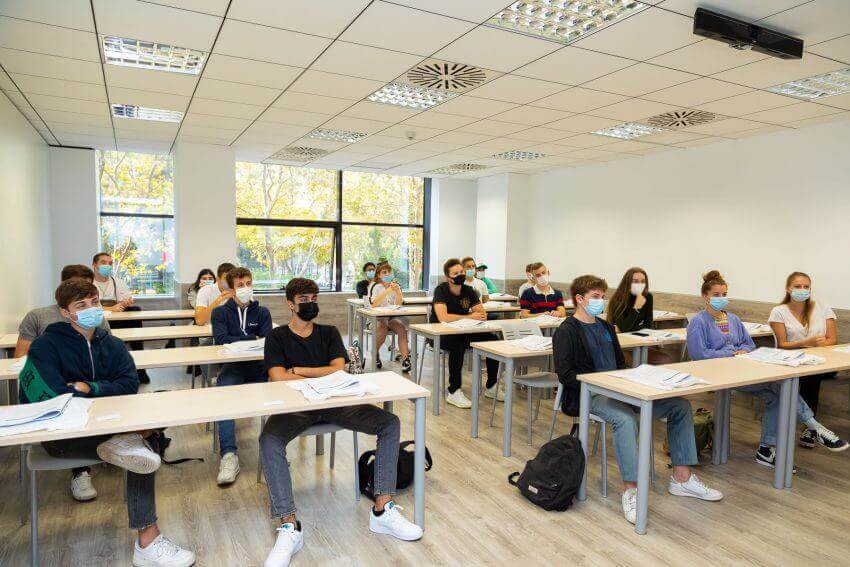How Has COVID-19 Changed Education?
As the COVID-19 pandemic unfolded this year, necessitating a range of unprecedented social isolation and safety measures, barely any aspect of daily life was left unaffected. One area which has certainly seen considerable changes as a result of COVID-19 is the education sector. When schools and universities around the world were forced to close their doors to prevent its spread, alternative methods and technologies had to be adopted almost overnight. Online learning became an urgent necessity, rather than an option.
The Acceleration of Digital Learning
Of course, e-learning had been included in the higher education experience for some time; however, never to the all-encompassing extent witnessed at the height of the pandemic. Teaching staff internationally were forced – often with little warning – to familiarize themselves with a range of online platforms in order to deliver entire courses on a fully remote basis. In turn, online platforms like Google innovated to meet this new demand, quickly incorporating functions such as video-conferencing to their Classrooms service.
Pre-pandemic, educational institutions had the option to incorporate digital learning as part of their offer, but it was often seen as a bonus or the exception to the rule – attractive mainly to part-time or foreign students seeking more flexible learning arrangements. COVID-19 undoubtedly represents a critical turning point. The prospect of returning to campus-only courses as the norm after this experience seems ever less likely. Critics have suggested that this disruption to the norm was much-needed, although it has obviously arrived under undesirable circumstances. Education is often described as a sector which has been relatively slow to adopt digital technologies.
This doesn’t mean that the traditional style of in-person education is gone for good, however. Researchers have discovered both advantages and disadvantages to remote learning. One positive outcome is that it encourages students to learn independently and at their own pace. A potential drawback is that students face obstacles in interacting and learning from one anothers’ contributions. The ability of digital education to meet the needs of learners who require additional support is also under question. The mixed feelings and opinions surrounding online learning suggest that post-pandemic a hybrid model may be most attractive for educational institutions and students alike.
There’s no doubt that these sudden shifts in the education sector have inspired the rethinking of traditional education structures in general. Changes that would have been widely inconceivable pre-pandemic — such as the cancellation of school exams in favour of coursework-based evaluation — have been forced through due to necessity. This has
opened a space for the reassessment of models that were assumed to be fundamental and unchallengeable in the past. Radical thinkers are seeing the pandemic as their long-awaited opportunity to innovate in education and make it more suitable for the evolving needs of the modern world.
Accessibility and Economic Considerations
As is the case with other industries, there is an economic component to consider when weighing the impact of COVID-19. The pandemic represented a financial hit for universities who usually depend on foreign students as a significant income stream. As the scale of the problem began to be understood, a large proportion of prospective students understandably postponed their places or opted to study from their home countries, realizing that in-person classes were unlikely to be offered for some time. For educational institutions that generate income – for example, from student accommodation – this has resulted in a financial loss.


However, the rollout of widespread virtual learning has also been recognized as posing money-making potential for universities around the world. There is the opportunity to make higher education available to previously-untapped demographics using digital technology. This means that universities could have a broader pool of prospective students to draw from in the future. The traditional model of in-person education is thought to be more expensive and labor-intensive to provide than online alternatives. That means remote learning could be offered at a reduced rate to a wider range of students, enabling universities to recoup COVID-19-related losses while increasing accessibility to underrepresented groups in academia.
Changes to the Student Experience
Those who did move into university residences have hardly enjoyed a typical student experience. Isolation has in many cases replaced the standard freshman activities which are designed to encourage social bonding and relationship building. For many students, separation from their families at this difficult time, alongside their disappointment at unmet expectations of academic life, has had an impact on their mental health. Universities have been varied in their response to this crisis and, as a result, the debate regarding the degree to which educational institutions bear responsibility for their students on a personal level has been reignited.
Students who have enjoyed academic achievements during the pandemic have also suffered from a lack of in-person opportunities to celebrate them. Graduation ceremonies, as with so many other events, have generally moved to Zoom. Likewise, high school students finishing their final year have been deprived of prom, a culturally-ingrained milestone in many countries. In the context of life-or-death that the pandemic has represented, these losses are arguably a trivial concern. However, bearing in mind that these events often represent landmark life experiences, their importance cannot be dismissed.
As normality slowly resumes to varying degrees around the world, educational institutions have responded by offering in-person learning opportunities on an optional, reduced or rotating basis. Those who do attend are likely to find the dynamic of their classroom or lecture hall greatly altered from before. Given the ongoing threat posed by COVID-19, social distancing measures are still observed and enforced in most countries. The use of face masks is generally encouraged, posing a potential barrier to student participation and interaction. It remains to be seen how, if and when schools and universities will return to business as usual.



Education as the Answer
In the meantime, COVID-19 continues to demonstrate the importance of education. People around the world eagerly anticipate the launch of an effective vaccine that will enable them to enjoy life as they knew it before the pandemic struck. The work of scientists and academics in the field of medicine now has a very obvious and immediate relevance for people of all backgrounds. The result of this increased attention may be greater awareness of developments in this field in future, and a renewed appreciation for the work of researchers in general.
Although COVID-19 has thoroughly changed education, the relationship is not entirely one-sided. Ironically, the solution to the current situation lies in the very institutions that have been so transformed by its impact: only the products of education can protect and equip the population to live safely and fully in the aftermath of the pandemic.










